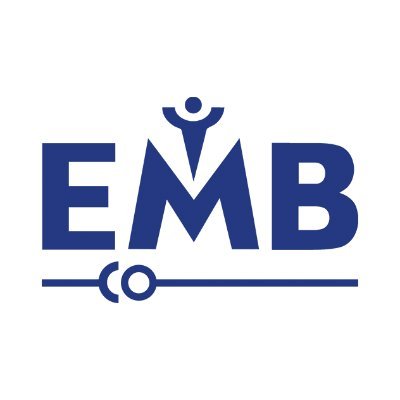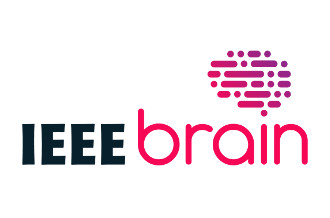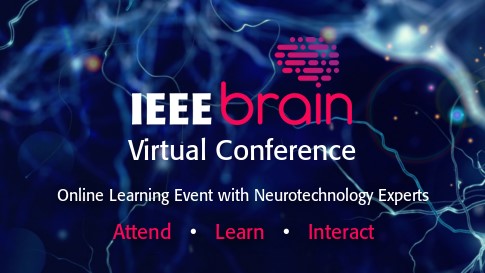-
IEEE Academy on Artificial Intelligence
Course Program In Artificial Intelligence, Emerging Technologies

Learn basic concepts in machine learning used throughout the course. This learning path will provide surface-level knowledge on data, types of learning models, measuring efficiency, and optimizing machine learning.Learning Path Length: 2.5 hoursEducator in ChiefPhillip SheuDr. Phillip C.-Y. Sheu is currently a professor of EECS, Computer Science and Biomedical Engineering at the University of California, Irvine. He received his Ph.D. and M. S. degrees from the University of California at Berkeley in Electrical Engineering and Computer Science in 1986 and 1982, respectively. From 1986 to 1988, he was an assistant professor at School of Electrical Engineering, Purdue University. From 1989 to 1993, he was an associate professor of Electrical and Computer Engineering at Rutgers University.A fellow of IEEE, Dr. Sheu currently is active in research related to semantic computing, robotic computing, artificial intelligence, biomedical computing and multimedia computing. He has published two books: Intelligent Robotic Planning Systems and Software Engineering and Environment - An Object-Oriented Perspective; and he is a co-editor of Semantic Computing (IEEE Press/Wiley). He also has published extensively in object-relational data and knowledge engineering. Sheu is the founder of the IEEE International Conferences of Semantic Computing (ICSC), Artificial Intelligence for Industries (ai4i), Transdisciplinary AI (TransAI), and the Computer Society Technical Committee on Semantic Computing (TCSEM). He is the founding editor-in-chief of the International Journal of Semantic Computing (IJSC) and is a co-founder of the IEEE International Conferences on Artificial Intelligence and Virtual Reality (AIVR), Multimedia Big Data (BigMM), Robotic Computing (IRC), and Artificial Intelligence and Knowledge Engineering (AIKE). He is also the inaugural educator-in-chief for the IEEE AI Academy.InstructorsJoseph BarrDr. Joseph R. Barr is a data scientist practitioner and researcher. His experience in data analytics spans more than two decades. Joe is currently Vice President of Research at Acronis SCS. Over the past 25 years he has held leadership positions in several organizations and a few startup companies where he was instrumental in promoting artificial intelligence/machine learning and building related products. Joe holds a doctoral degree in mathematics from the University of New Mexico.Matthew EngMatthew Eng is a developer studying computer science and artificial intelligence at the University of California, Irvine. He is working with Veryfi, a digital accounting company specializing in automated data extraction and document processing. Matthew has also produced similar tutorial and educational videos on programming. In the past, he has contributed to other open-source projects and specializes in web and software development.For more information visit IEEE Academy webpage https://www.ieee.org/education/academy-index/artificial-intelligence1.htmlAudience: The Academy is primarily for members who work in industry and need to understand new technical information quickly so they can apply it to their work. At the completion of the IEEE Academy on Artificial Intelligence, the learner will be able to demonstrate their new knowledge and will earn a certificate.Publication Year: 2022
English (United States)
-
IEEE Academy on Smart Grid Distribution Automation
Course Program In Power & Energy, Smart Grid

Distribution Automation (DA) is the foundation upon which the Smart Grid is built. This learning path will cover the fundamentals of the existing power distribution system, starting with an overview, and will include equipment, components, devices, applications, and functionalities of the power grid. In addition, Power Distribution System processes like planning, design, operation, and maintenance—will be covered. The next step will discuss automating the distribution system. This includes system architecture, layers, objectives, functions of distribution substation and feeder automation. The course will further proceed to the advanced functionalities of DA, including the role of Distribution Management System (DMS) in Smart Grid. Important aspects include major challenges and issues related to Distributed Energy Resources (DERs) integration, Microgrids, Electric Vehicles (EVs).along with Distribution System (DS) optimization, interoperability, Standards and Regulations, DS reliability indices, simulation, load flow analysis, and protection coordination. Also included are case studies and best practices in DA, modern and future DS grid attributes and characteristics, and Distribution System Operator’s (DSO) role for future grid. The course will wrap up with upcoming developments, research reports, and trends in DS Automation.Learning Path Length: 15 hoursEducator in ChiefPeter WungDr. Peter Wung has been the Chair of the IEEE Smart Grid Program since 2018. He is also the Educator–In–Chief of the IEEE Smart Grid Academy.He was awarded his PhD in Electrical Engineering in 1993 from the Georgia Institute of Technology and is currently adjunct professor at the University of Dayton, specializing in the fields of Electrical Energy, Renewable Energy, Power Systems, and Electric Machines and Drives.Dr. Wung is a Senior member of the IEEE and has been active with the Smart Grid Program since 2014, serving as the Chair of the Research and Development Committee from 2015–2018.Technical EditorSatish SainiMr. Satish Saini currently serves as the Chair of IEEE Smart Grid Technical Activities Committee and Senior Advisor in Power System and Distribution Grid Modernization. He also is the Director of the Center of Innovation, Research & Technology, or CIRT Power System. With a bachelor’s degree in Electrical Engineering and many advanced courses, Mr. Saini is a Licensed Professional Engineer registered with PEO, Canada. He has 35 years of accomplished management experience in various fields of energy and power. His experience includes electrical utility operations, business development, and project management related to Distribution System called DS grid modernization and on renewable energy, smart metering, AMI, Advanced Distribution System or ADMS, Smart Grid and DMS, which includes hiring, training and mentoring. He has actively participated in the development of various energy policies with ministries, regulatory authorities, utilities and local distribution companies. Mr. Saini is an active member of IEEE committees, Task Forces and Working Groups related to Smart Distribution, Smart Grid, Microgrids, and Smart Cities, and is also the Chair of Education Committee for the IEEE Toronto Section. He serves as a Smart Grid Specialist and has a strong vision of developing the aging DS Grid with latest innovative technologies and solutions along with transforming utilities through smart grid programs.For more information visit IEEE Academy webpage https://www.ieee.org/education/academy-index/smartgrid.htmlAudience: A wide range of audience from academia, industry and public sectors. This includes researchers, professional, engineers, scientists, technicians and trainers from secondary and higher education institutions, IT companies and state organizations.Publication Year: 2022
English (United States)
-
IEEE Academy on Internet of Things (IoT) Communication Standards
Course Program In IEEE Standards, Internet of Things, and 3 more (Show All)
.png)
Communication technology is an essential part of the Internet of Things (IoT) as it allows IoT devices to be connected to each other. Low power wide area network (LPWAN) is a promising communication standard solution for long range and low power IoT and machine to machine (M2M) communications. IoT service layer platform provides a set of common functions for IoT applications and integrates various communication technologies. In order to provide interoperable IoT solutions to the market, such communications and platforms are integrated based on the global standard solution, e.g., 3GPP 5G and oneM2M. 3GPP 5G technologies serve as a key enabler for IoT applications that need high mobility, low latency, and reliability. oneM2M interworks with 3GPP IoT features for the better adoption by the devices and applications. This learning path covers the basic principles of communication technology and practical usage of standardized communication.Learning Path Length: 8 hoursEducator in ChiefChonggang Wang, FIEEEChonggang Wang received his Ph.D. degree from Beijing University of Posts and Telecommunications (BUPT) in 2002. He is currently a Member Technical Staff with InterDigital Communications. His current research interests include decentralized IoT, semantic computing and services for IoT, fog computing for IoT, IoT data analytics, and advanced IoT services. He also has abundant IoT standardization experience including oneM2M, IETF, IEEE, and ETSI TC M2M. He was the co-founder (2011-2013) and the founding Editor-in-Chief (EiC) of IEEE Internet of Things Journal (2014-2016). He is currently the Associate EiC of IEEE Transactions on Big Data and the EiC of IEEE Blockchain Technical Briefs. He is an IEEE Fellow for his contributions to IoT enabling technologies (2017).Technical EditorsReza MalekianReza Malekian is Professor of Computer Science at Malmö University, Sweden and an Extraordinary Professor in the Department of Electrical, Electronic, and Computer Engineering at University of Pretoria, South Africa, where he previously led the Advanced Sensor Networks research group and received the Exceptional Young Researcher’s award from Vice-Chancellor. His research focuses on the Internet of Things, connectivity, and sensor networks. He is registered as a chartered engineer (CEng) with the Engineering Council of UK, a senior member of the IEEE, a senior member of the ACM, and a Fellow of the British Computer Society, The Chartered Institute for IT. Dr. Malekian has been serving as an Associate Editor for IEEE Transaction on Intelligent Transportation Systems, and IEEE Internet of Things Journal (2016-2020) and has been involved in the organizing committee of the relevant IoT conferences including General co-Chair of IEEE 5G Summit Pretoria, TPC co-Chair of the IEEE International Conference on Industrial Internet (ICII) and IEEE Wireless Africa Conference, invited speaker co-Chair of the IEEE International Conference on Computing, Networking and Communications (ICNC) and Best Paper Award Committee of the International Conference on Neural Computing for Advanced Applications.JaeSeung SongJaeSeung Song is an associate professor, leading the Software Engineering and Security group (SESlab) in the Computer and Information Security Department at Sejong University. He received a PhD at Imperial College London in the Department of Computing, United Kingdom. He holds BS and MS in Computer Science from Sogang University. He holds the position of oneM2M Technical Plenary Vice and a director on IoT platforms at KICS. Prior to his current position, he worked for NEC Europe Ltd. between 2012 and 2013 as a leading standard senior researcher. At that time, he actively participated in IoT related R&D projects such as the Building as a Service (BaaS) FP 7 project and IoT/M2M standardizations (i.e., ETSI TC M2M and oneM2M). From 2002 to 2008, he worked for LG Electronics as a senior researcher leading a 3GPP SA standard team. He occupied leadership positions in 3GPP and oneM2M standard groups as a rapporteur and active contributor.He is the co-author and co-inventor of over 100 international publications, conference papers and patent applications. His research interests span the areas of software engineering, networked systems and security, with focus on the design and engineering of reliable IoT/M2M platforms, particularly in the context of semantic IoT data interoperability, secure software patch techniques and data analytics using machine learning. He also holds leadership roles (series editor and TPC co-chair) in several journals and conferences such as an associate editor of IEEE IoT journal, IoT series editor of IEEE Communications Standards Magazine and TPC Co-Chair of IEEE Conference on Standards for Communications and Networking.For more information visit IEEE Academy webpage https://www.ieee.org/education/academy-index/internet-of-things.htmlAudience: A wide range of audience from academia, industry and public sectors. This includes researchers, professional, engineers, scientists, technicians and trainers from secondary and higher education institutions, IT companies and state organizations.\Publication Year: 2021
English (United States)
-
IEEE Academy on Smart Grid Microgrids
Course Program In Power & Energy, Smart Grid

A microgrid is a group of interconnected loads and distributed energy resources that acts as a single controllable entity with respect to the grid. This learning path will provide an understanding about microgrid technologies. Products and solutions in the field of electrical power system along with function of major components will also be discussed. In addition we will also review microgrids integration with DERs like wind, solar PV and storage system, microgrid operation in grid connected and islanded modes and microgrid planning and Energy Management System. This path will provide information, knowledge and resources related to latest trends, technologies and solutions for microgrids along with major components; application of technologies, benefits, challenges and best practices, modelling, analysis, protection and control.Learning Path Length: 5 hoursEducator in ChiefPeter WungDr. Peter Wung has been the Chair of the IEEE Smart Grid Program since 2018. He is also the Educator–In–Chief of the IEEE Smart Grid Academy.He was awarded his PhD in Electrical Engineering in 1993 from the Georgia Institute of Technology and is currently adjunct professor at the University of Dayton, specializing in the fields of Electrical Energy, Renewable Energy, Power Systems, and Electric Machines and Drives.Dr. Wung is a Senior member of the IEEE and has been active with the Smart Grid Program since 2014, serving as the Chair of the Research and Development Committee from 2015–2018.Technical EditorsMostafa FarrokhabadiDr. Mostafa Farrokhabadi holds a Ph.D. in Electrical and Computer Engineering with more than a decade of experience in designing mission-critical, smart grid solutions for industry and academia. His work focuses on microgrid projects in Canada, the U.S., U.K., Germany, and India. Farrokhabadi has co-authored several articles in high-impact journals, conference proceedings, and magazines, and he holds patents on intelligent control and optimization of renewable-penetrated smart grids. He has also led the award-winning IEEE Power and Energy Society (PES) Task Force on microgrid stability, an international coalition of 21 researchers from 14 institutions investigating stability issues in microgrids. During the course of his career, Farrokhabadi has received multiple business, research, and teaching awards, including Canada’s prestigious National Capital Region Forty Under 40 award. Furthermore, he was selected by the Royal Society of Canada to be among the 21 scientists representing Canada in the 2021 Commonwealth Science Conference. Farrokhabadi is a Senior member of IEEE, IEEE PES, IEEE PES Power System Dynamic Performance Committee, and IEEE HKN. He is a distinguished Associate Editor of IEEE Transactions on the Smart Grid, Associate Editor of IEEE DataPort, and Past Chair of IEEE Ottawa Section.Satish SainiMr. Satish Saini currently serves as the Chair of IEEE Smart Grid Technical Activities Committee and Senior Advisor in Power System and Distribution Grid Modernization. He also is the Director of the Center of Innovation, Research & Technology, or CIRT Power System. With a bachelor’s degree in Electrical Engineering and many advanced courses, Mr. Saini is a Licensed Professional Engineer registered with PEO, Canada. He has 35 years of accomplished management experience in various fields of energy and power. His experience includes electrical utility operations, business development, and project management related to Distribution System called DS grid modernization and on renewable energy, smart metering, AMI, Advanced Distribution System or ADMS, Smart Grid and DMS, which includes hiring, training and mentoring. He has actively participated in the development of various energy policies with ministries, regulatory authorities, utilities and local distribution companies. Mr. Saini is an active member of IEEE committees, Task Forces and Working Groups related to Smart Distribution, Smart Grid, Microgrids, and Smart Cities, and is also the Chair of Education Committee for the IEEE Toronto Section. He serves as a Smart Grid Specialist and has a strong vision of developing the aging DS Grid with latest innovative technologies and solutions along with transforming utilities through smart grid programs.For more information visit IEEE Academy webpage https://www.ieee.org/education/academy-index/smartgrid.htmlAudience: A wide range of audience from academia, industry and public sectors. This includes researchers, professional, engineers, scientists, technicians and trainers from secondary and higher education institutions, IT companies and state organizations.Publication Year: 2023
English (United States)
-
IEEE Academy on Internet of Things (IoT) for the Computing Platforms
Course Program In Internet of Things, Computing, and 1 more (Show All)
.png)
IoT computing platforms are essential to the development and deployment of IoT applications. Being naturally distributed, such applications have very challenging and diverse requirements. On one hand, they have components running on embedded devices within the physical world which are highly constrained in terms of power, computing, and communication resources. On the other, they need in many cases to operate on a very-large scale, covering large geographical areas and asked to process a huge amount of aggregate data. These requirements call for peculiar IoT software design and new computing paradigms characterized by multi-tier architectures that span across the IoT computing continuum, from tiny embedded sensors/actuators to edge/cloud backend computing platforms. Several solutions are indeed already available to developers and providers as commercial or open-source IoT platforms, which are based on interoperable computing and communication standards supporting applications in different IoT vertical domains. The learning path covers all these aspects by providing an overview of the current state-of-art and future trends on computing platforms for IoT applications.Learning Path Length: 9 hoursEducator in ChiefChonggang Wang, FIEEEChonggang Wang received his Ph.D. degree from Beijing University of Posts and Telecommunications (BUPT) in 2002. He is currently a Member Technical Staff with InterDigital Communications. His current research interests include decentralized IoT, semantic computing and services for IoT, fog computing for IoT, IoT data analytics, and advanced IoT services. He also has abundant IoT standardization experience including oneM2M, IETF, IEEE, and ETSI TC M2M. He was the co-founder (2011-2013) and the founding Editor-in-Chief (EiC) of IEEE Internet of Things Journal (2014-2016). He is currently the Associate EiC of IEEE Transactions on Big Data and the EiC of IEEE Blockchain Technical Briefs. He is an IEEE Fellow for his contributions to IoT enabling technologies (2017).Technical EditorEnzo MingozziDr. Enzo Mingozzi is a Full Professor at the Department of Information Engineering of the University of Pisa, Italy. His research activities span several areas including Mobile Edge/Fog Computing and the Internet of Things. He has co-authored more than 130 peer-reviewed papers in international journal and conference proceedings, 5 book chapters and 10 patents. He is currently Area Editor (Services, Applications, and Other Topics for IoT) of the IEEE Internet of Things Journal, and Technical Editor of the IEEE Academy on the Internet of Things. He has many years of experience in teaching courses related to computer networking and IoT systems in both the academia and industry.For more information visit IEEE Academy webpage https://www.ieee.org/education/academy-index/internet-of-things.htmlAudience: A wide range of audience from academia, industry and public sectors. This includes researchers, professional, engineers, scientists, technicians and trainers from secondary and higher education institutions, IT companies and state organizationsPublication Year: 2021
English (United States)
-
Technology Transfer
Online In Bioengineering

This session will focus on Technology Transfer.InstructorYongmin KimDr. Yongmin Kim spent 29 years at the University of Washington in Seattle before becoming President of Pohang University of Science and Technology (POSTECH) in Korea in 2011. Currently, he is Past President and Professor in the Department of Creative IT Engineering at POSTECH.His research interests include medical imaging and computing, ultrasound systems, distributed diagnosis and home healthcare, and computer architecture, leading to more than 450 research publications. Dr. Kim and his research group are responsible for 85 inventions and counting, 70 patents, and the transfer of technologies to industry via 27 licenses. He has also helped to commercialize these technologies.Dr. Kim received the IEEE EMBS Early Career Achievement Award and IEEE EMBS Distinguished Service Award in 1988 and 2010, respectively. In 2011, he received the IEEE EMBS William J. Morlock Award. In 2012, he was selected as the University of Washington Medicine Inventor of the Year.Dr. Kim served as Program Chair of the 1989 IEEE EMBS Conference, Conference Co-Chair of the 2009 IEEE EMBS Conference, and served on the IEEE Fellow Committee from 1998 to 2001 and on the IEEE EMBS Administrative Committee for many years. He was the IEEE EMBS President for 2005 and 2006. Dr. Kim is a Fellow of the IEEE, American Institute for Medical and Biological Engineering, and International Academy for Medical and Biological Engineering. He earned a BS degree in electronics engineering from Seoul National University and his MS and PhD degrees in electrical engineering from the University of Wisconsin.Publication Year: 2020
English (United States)
-
Motor Imagery BCI for Cognitive Profiling in Disorders of Consciousness and Prospects for Direct Speech BCI with Imagined-speech
Online In Emerging Technologies

This webinar will cover two current hot topics in EEG-based brain-computer interface research and research ongoing at the Intelligent Systems Research Centre.Part 1 will focus on assessment of patients with prolonged disorder of consciousness (PDoC). Motor imagery brain-computer interface (MI-BCI) may facilitate willful modulation of sensorimotor oscillations in patients with PDoC, enabling assessment of awareness and question answering by imagining movement and thus, potentially, movement-independent neuropsychological assessment. We evaluated this potential with a cohort of PDoC patients (n=24). Whilst results revealed patients across the PDoC spectrum have capacity to learn to modulate sensorimotor rhythms and respond to closed questions, differences in patient cognition are more likely to be revealed after extended training with feedback and more intensive question-and-answer sessions.Part 2 will focus on direct speech BCIs. Several recent studies have harnessed overt speech to examine linguistic communication through neural signals. While imagined speech is the holy grail modality for a BCI based on language, systematic study of imagined speech has been relatively sparse. The phenomenology of imagined speech, its relationship to overt speech, and the effect of different stimuli on efforts to elicit and label its neural correlations to enable algorithms to learn to detect and classify it, are currently not well understood. Employing the first picture-naming paradigm in speech BCI research, this talk will show that effects of stimuli/cues on speech decoding from EEG are highly significant, whilst linguistic properties of semantics and syntax are not and that overt speech is easier to decode from EEG than imagined speech.Access is free to subscribers of the IEEE Brain Community.InstructorProf. Damien CoyleDamien Coyle, Professor of Neurotechnology, is Director of the Intelligent Systems Research Centre at Ulster University’s Magee Campus. He has published over 150 research papers in areas such as computational intelligence/AI, bio-signal processing, computational neuroscience, neuroimaging, neurotechnology and brain-computer interface (BCI) applications and has won a number of prestigious international awards for his R&D including the 2008 IEEE Computational Intelligence Society (CIS) Outstanding Doctoral Dissertation Award, the 2011 International Neural Network Society (INNS) Young Investigator of the Year Award and the IET and E&T Innovation of the Year Award 2018. He was an Ulster University Distinguished Research Fellow in 2011, a Royal Academy of Engineering/The Leverhulme Trust Senior Research Fellow in 2013, a Royal Academy of Engineering Enterprise Fellow in 2016-2017 and is currently a UKRI Turing AI Fellow 2021-2025. He is a founding member of the International Brain-Computer Interface Society, a Senior member of the IEEE, chairs the IEEE Computational Intelligence Society (CIS) UKIreland chapter and is the IEEE CIS representative in the IEEEBrain steering committee. He is Founder and CEO of NeuroCONCISE Ltd, an award-winning, AI-enabled, wearable neurotechnology company.Publication Year: 2021
English (United States)
-
Bioelectronics: Senior Faculty Panel
Online In Bioengineering, Emerging Technologies

Bioelectronics is a rapidly growing field that develops electronic systems to intelligently interact with biological tissue for applications spanning healthcare, lifestyle, and education. In this virtual conference you will learn fundamental principles of bioelectronic systems and hear from world experts about how to build a successful career in this emerging research field.As part of the IEEE Brain Virtual Conference that occurred in November 2019, the Senior Faculty Panel is an interactive question and answer session focusing on building and maintaining leading research groups and working with industry. It is now available on-demand. Access is free to members of the IEEE Brain Community. After completing your purchase, you will receive an email with instructions for accessing the content.PanelistsBianxiao CuiBianxiao Cui is a professor of Chemistry and a fellow of the Wu Tsai Stanford Neuroscience Institute at Stanford University. She holds a Ph.D. degree from the University of Chicago and a BS degree from University of Science and Technology of China. She worked as a postdoctoral scholar with Prof. Steven Chu before joining the faculty of Stanford University, Department of Chemistry. Her main area of interest is to understand how cells and tissues interact with nanoscale topographic features of material surfaces. She also develops nanoscale tools to study electrophysiology and signal transduction in neurons at normal conditions and in neurodegenerative diseases. Her awards and distinctions include Barany Award from Biophysical Society, NIH New Innovator Award, NSF CAREER award, NSF Inspire award, Packard Fellowships in Science and Engineering, Hellman Scholar, Searle Scholar.Kip LudwigDr. Kip Ludwig’s Laboratory at the University of Wisconsin focuses on developing next-generation neuromodulation therapies that use minimally invasive strategies to ‘wiretap’ the nervous system to treat circuit dysfunction and deliver biomolecules to target areas with unprecedented precision. Dr. Ludwig previously served as the Program Director for Neuroengineering at the National Institutes of Health. He co-led the Translational Devices Program at NINDS and led the NIH BRAIN Initiative programs to catalyze implantable academic and clinical devices to stimulate and/or record from the central nervous system. He also developed the NIH/Industry Neurotechnology Public/Private Partnership Program. Dr Ludwig was an NINDS liaison to the FDA, including the FDA’s Stimulation Safety and Early Feasibility Studies Working Groups.Dr. Ludwig also worked in Industry as a scientist, where he conceived, developed and demonstrated the chronic efficacy of a next-generation neural stimulation electrode for reducing blood pressure in both pre-clinical studies and clinical trials. Through his industry work he oversaw Good Laboratory Practice (GLP) and non-GLP studies enabling clinical trials in Europe and the United States, as well as participated in the development and execution of those trials, leading to approval for sale in twenty countries and a successful U.S. Pivotal trial.Dr. Ludwig connects his research to industry through multiple consulting and advisory roles. He is the Chair of the NeuroOne Scientific Advisory Board, is a member of the Scientific Advisory Board for Battelle, Blackfynn, Cala Health and the National Center for Adaptive Neurotechnologies, and is a co-founder of Neuronoff, Inc.John RogersJohn A. Rogers is the Louis Simpson and Kimberly Querrey Professor of Materials Science and Engineering, Biomedical Engineering and Medicine at Northwestern University, with affiliate appointments in Mechanical Engineering, Electrical and Computer Engineering and Chemistry, where he is also Director of the recently endowed Center for Bio-Integrated Electronics. He has published more than 700 papers, is a co-inventor on more than 100 patents and he has co-founded several successful technology companies. His research has been recognized by many awards, including a MacArthur Fellowship (2009), the Lemelson-MIT Prize (2011), the Smithsonian Award for American Ingenuity in the Physical Sciences (2013) and most recently the MRS Medal (2018) and the Benjamin Franklin Medal from the Franklin Institute (2019). He is a member of the National Academy of Engineering, the National Academy of Sciences, the National Academy of Inventors and the American Academy of Arts and Sciences.Publication Year: 2019
English (United States)
-
Channel Selection at RF Video
Online In Components, Circuits, Devices & Systems, Circuits & Devices

A holy grail in RF design has been to perform channel selection at RF, i.e., remove strong interferers and even out-of-channel noise at the receiver input rather than in the baseband. Such an approach is attractive for it obviates the need for SAW filters and greatly relaxes the linearity requirements of the receiver chain, ultimately leading to a lower power consumption and a more compact design. This research demonstrates a universal CMOS receiver employing RF channel selection and meeting the exacting demands of GSM and WCDMA. Drawing upon commutated networks, we introduce the concept of the "Miller bandpass filter" and several of its variants so as to create a receiver that achieves a narrow channel bandwidth and can withstand large blockers. Realized in 65-nm technology, the prototype provides a programmable bandwidth from 350 kHz to 20 MHz and draws 20 mW.The noise figure is 2.9 dB in the absence of blockers and 5 dB with a 0-dBm blocker at 20-MHz offset.InstructorBehzad RazaviBehzad Razavi is Professor of Electrical Engineering at UCLA, where he conducts research on analog and RF integrated circuits. An IEEE Fellow, Prof. Razavi has served as an IEEE Distinguished Lecturer and has published more than 180 papers and seven books. He has received eight IEEE best paper awards and four teaching awards, and his books have been published in seven languages. He received the 2012 IEEE Pederson Award in Solid-State Circuits and was recognized as one of the top ten authors in the 50-year history of the IEEE International Solid-State Circuits Conference. He is a member of the National Academy of Engineering and the recipient of the 2017 IEEE CAS John Choma Education Award.Publication Year: 2018
English (United States)
-
Dissecting Design Choices in Continuous-time Delta-Sigma Converters
Online In Components, Circuits, Devices & Systems, Circuits & Devices

Continuous-time Delta-Sigma Modulators (CTDSMs) are a compelling choice for the design of high resolution analog-to-digital converters. Many delta-sigma architectures have been published (and continue to be invented). This leaves the designer with a bewildering array of choices, many of which seem to pull in opposite directions. Further, it is often difficult to make a clear comparison of various architectures, as they have been designed for dissimilar specifications, by different design groups, and in different technology nodes. This talk examines various alternatives for the design of power efficient single-loop continuous-time delta sigma converters.InstructorShanthi PavanShanthi Pavan received the B.Tech from IIT Madras in 1995 and the doctoral degree from Columbia University, New York City, in 1999. He is currently a Professor of Electrical Engineering at IIT Madras. His research interests are in the areas of high speed analog circuit design and signal processing. He is a recipient of many awards, including the IEEE Circuits and Systems Society Darlington Best Paper Award (2009) , the Swarna Jayanthi Fellowship (2009) and the Shanti Swarup Bhatnagar Award (2012). He has served as the Editor-in-Chief of the IEEE Transactions on CIrcuits and Systems:Regular Papers. He has served on the Technical Program Committee at the International Solid State Circuits Conference (ISSCC), and as a Distinguished Lecturer of the Solid-State Circuits Society. He is currently a distinguished lecturer of the IEEE Circuits and Systems Society. He is a fellow of the Indian National Academy of Engineering (INAE) and the Institute of Electrical and Electronic Engineers (IEEE). He is the coauthor (with Richard Schreier and Gabor Temes) of "Understanding Delta Sigma Converters", published by the Wiley-IEEE Press.Publication Year: 2020
English (United States)
Can't find what you're looking for? Make a content suggestion!